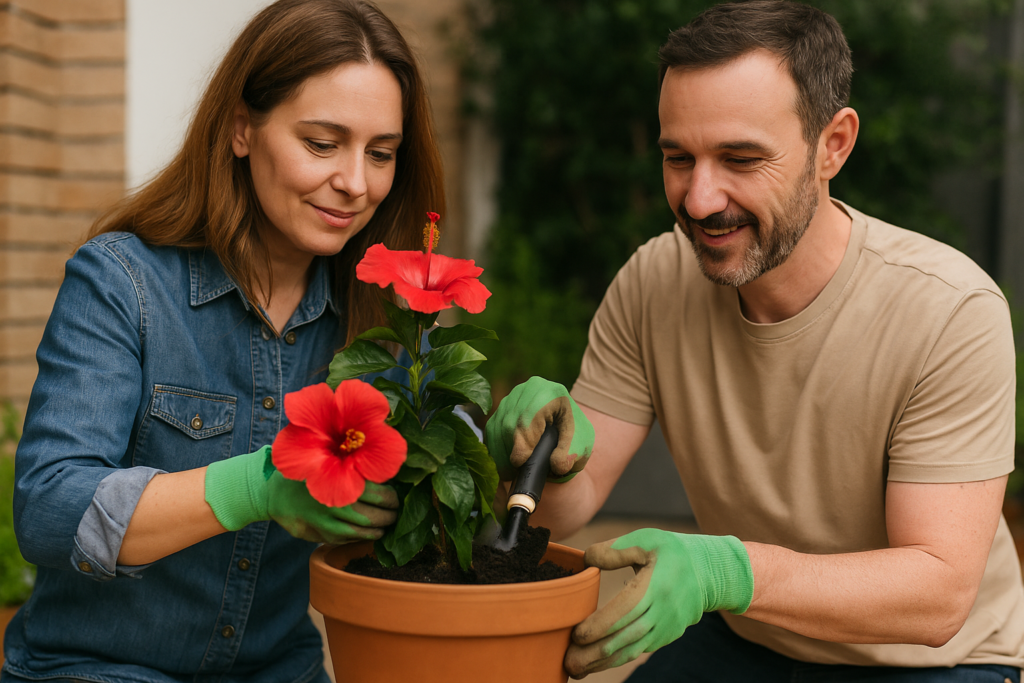Bringing a touch of the tropics to your garden is easier than it seems. Starting your own hibiscus at home doesn’t require expert gardening skills—just a bit of care, the right setup, and patience. These stunning flowers don’t just brighten your space; they make you feel like summer is always around the corner.
I’ve grown hibiscus on a small city balcony and in a backyard garden, and both worked beautifully. With the right approach, anyone can do it.
Why hibiscus is worth growing
There’s something special about hibiscus. Their vibrant petals open wide as if they’re welcoming the sun. They’re also pretty tough once established. You’ll get more than just looks—these flowers attract hummingbirds, butterflies, and bring a peaceful energy to any spot.
Picking the perfect plant for your space
Hibiscus comes in different types, and knowing which one fits your climate is step one:
- Tropical hibiscus loves heat and does best in pots that can be moved inside when it’s cold.
- Hardy hibiscus can take chilly winters and grow right in the ground.
- Roselle is for those who want flowers and tea—yes, the leaves and calyces are edible!
Prepping the ground or pot
Good soil makes all the difference. I like mixing compost into regular garden soil to make it richer. Hibiscus roots hate sitting in soggy dirt, so drainage is key. If you’re using a pot, make sure it has holes at the bottom—no shortcuts here.
Sunlight = flowers
Your hibiscus needs light like we need coffee. Six hours of direct sun a day is the sweet spot. Indoors, put it near a bright window. Outdoors, avoid super windy corners—the flowers are big and delicate.
Let’s get planting
Here’s how I do it:
- Dig a hole or fill your pot with the mix.
- Gently remove the plant from its pot, loosen the roots.
- Set it in place so the top of the root ball lines up with the soil surface.
- Fill in with soil and press lightly.
- Water slowly so it sinks in deeply.
- Add mulch if planting in the ground, but don’t pile it up against the stem.
Watering: Don’t overthink it
Stick your finger in the soil. If the top inch is dry, it’s time to water. During hot days, especially in pots, it may need water daily. Just don’t drown it—hibiscus isn’t a fan of wet feet.
Feeding for more blooms
I use a flower-focused fertilizer about twice a month when it’s warm. Too much fertilizer gives you big green leaves but barely any flowers. Keep it balanced.
Trim and tidy up
A quick spring trim goes a long way. I cut back the longer stems and remove any dried or damaged parts. It helps the plant grow fuller and flower more.
Watch for unwanted guests
Sometimes pests like aphids or mites show up. I’ve had good luck with a simple mix of water and dish soap sprayed on the leaves. Don’t stress—hibiscus usually bounces back quickly.
When it gets cold
If you’re in a colder area:
- Move tropical hibiscus inside before it drops below 10°C (50°F).
- Water less in winter but don’t let it dry out completely.
- For hardy hibiscus, cut it down after the first frost and cover the base with mulch.
Starting new plants
One of my favorite parts is propagating from cuttings. Just snip a healthy branch, dip it in water or stick it in moist soil, and wait. It’s like plant magic watching roots appear.
Make space for beauty
Having hibiscus at home brings more than pretty flowers. It gives you a connection to nature, a reason to slow down, and something truly rewarding to care for. Even if you’re short on space or experience, a single hibiscus in a sunny corner can lift your entire mood.
Try it—and let your garden surprise you.






